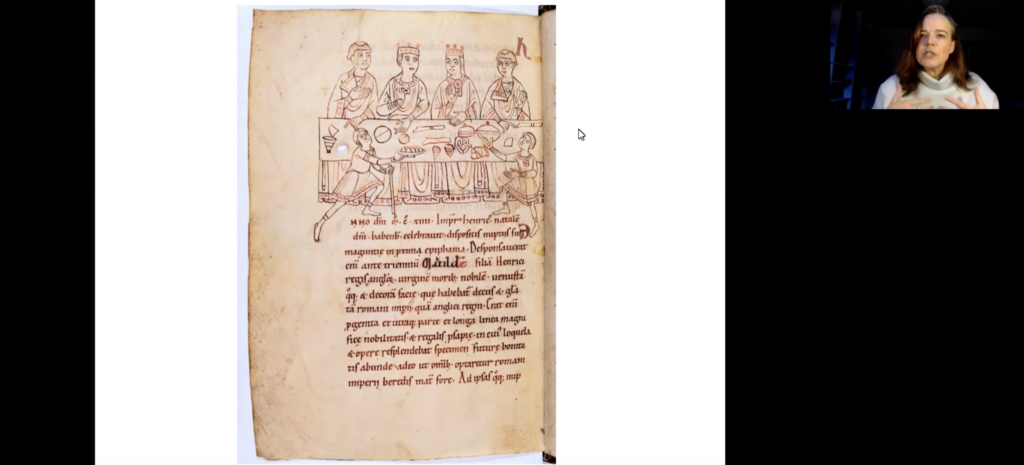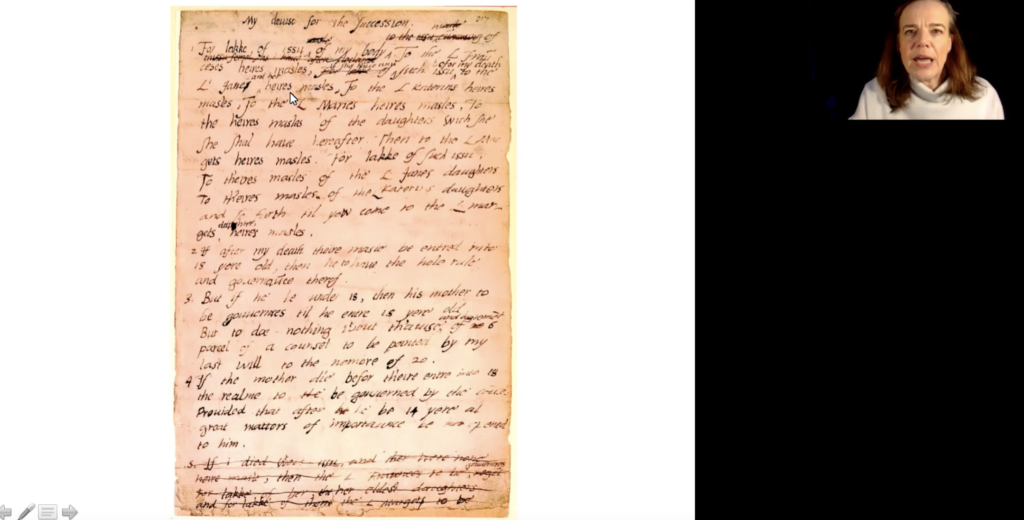
Women have always struggled with how the world sees them in positions of power, and historian and author Dr Helen Castor compared some of England’s early royal women to modern politicians in an online lecture this week.
Pointing out “the precedent set by the Tudor queens in England was partial and pragmatic,” Castor explained how women learned that they “could rule, but would have to find a way around the deeply embedded cultural assumptions that power was male.”
The lecture was given via Zoom on 23 March for the Royal Oak Foundation, the U.S. arm of the National Trust, and followed the topic of her 2011 book She-Wolves: The Women Who Ruled England Before Elizabeth, which also had a corresponding documentary series.
When writing the book, which spans from the 12th to 16th centuries, Castor said: “The question of women in power in history and in our culture seemed to me to be a subject that was both resonant and relevant.” She continued that she didn’t realise in 2021 just how relevant the stories would be in the UK, noting Theresa May and Nicola Sturgeon’s rise to political power, along with other female world leaders such as Angela Merkel and Kamala Harris.
Much of the talk covered Henry I’s daughter Matilda, who never actually had a coronation but whose bid for the English throne in the 1100s was ultimately successful.

After his son died, leaving him with no legitimate options to take the throne, King Henry I recognised Matilda as heir. She already had experience in power, having returned to England after her husband, the Holy Roman Emperor Henry V, died. Castor said when it came to his court swearing allegiance to her, the only controversy was “who should have the honour of swearing first.”
However, after Henry died, Stephen, Matilda’s cousin, had himself crowned king before Matilda knew what had happened. A long civil war lasting nearly 20 years known as “The Anarchy” broke out, and although Matilda’s side claimed victory, it didn’t quite work out that way.
Castor said that although no one had “made the theoretical argument that a woman couldn’t rule,” in practice it became quite clear that she would be looked at differently.
“‘All chroniclers agree that in her hour of victory she displayed an intolerable pride and willfulness,” Castor said a historian of the period wrote. Another complained, “She began to walk and speak and do all things more stiffly and more haughtily.”
Castor compared Matilda to Hillary Clinton, as she was frequently called too ambitious and described using words that would never be used for a male candidate in a position of power.
Noting that the word ‘queen’ in its original Anglo Saxon origin means “the wife of a king,” Castor said part of the problem was Matilda was trying to be queen in a new way, rather than a wife. While Matilda was never crowned and her son, who became Henry II, ultimately took the throne, she was an early example of a female ruler in England.
Moving on, Castor discussed Henry VIII and his obsession with a male heir, and how John Knox’s The First Blast of the Trumpet against the Monstrous Regiment of Women in 1558 displayed attitudes toward women in power during the Tudor era.
When Henry’s son Edward VI wrote his device for the succession, it used the words “heirs male” over and over, but when he became fatally ill at the age of 15, the only remaining contenders for the crown were female. By adding two small words to the document, he managed to change history. Where it had previously said his cousin Lady Jane Grey’s male heirs, he added the words “and her.” It took just nine days after Jane Grey’s proclamation as queen for supporters of his Catholic sister Mary to put her on the throne, instead.

Mary’s struggle as the first reigning queen was that advisors, such as the Holy Roman Emperor Charles V, remarked that “she couldn’t and shouldn’t make decisions for herself,” Castor said.
“Let her be in all things what she ought to be: a good Englishwoman, and avoid giving the impression that she desires to act on her own authority, letting it be seen that she wishes to have the assistance and consent of the foremost men of the land,” he said, and urged that “it will be necessary, in order to be supported in the labour of governing and assisted in matters that are not of ladies’ capacity, that she soon contract matrimony with the person who shall appear to her most fit from the above point of view.”
Castor discussed the differences between Mary and Elizabeth, where while Mary realised she had to marry quickly and give birth to England’s next Catholic heir to prevent Elizabeth from taking the throne, Elizabeth’s stance was to purposely never marry or have children.
“Elizabeth was glorious, certainly, but her example didn’t show that women could rule just as well as men,” Castor said. “If Matilda had succeeded in wearing the crown she so nearly acquired 400 years earlier, it might have been rather different. It might have been a precedent to go some way towards normalising the succession of a later queen.”
Castor also pointed out that she thought Margaret Thatcher’s overall message was more like Elizabeth’s in that she wasn’t trying to show women were fit to rule, but that she was special and different in her ability to do so.
The Royal Oak Foundation runs a series of programmes and lectures on British history and culture across the United States each year. In 2019, Royal Central met with Castor in Philadelphia to discuss her Lady Jane Grey lecture at another Royal Oak Foundation event, which was based on the documentary of the same name. For more information, visit www.royal-oak.org.

